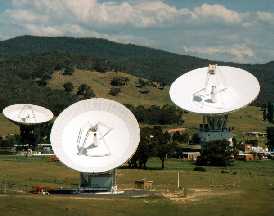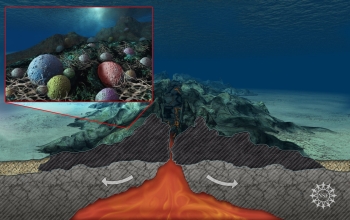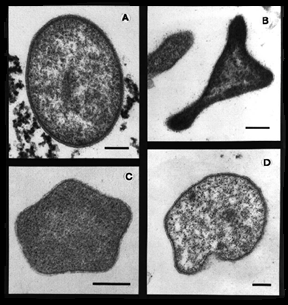These Archaea species live in extreme heat near deep sea vents.
Click on image for full size
Image courtesy of NOAA
Related links:
A Matter of Scale - interactive showing the sizes of things, from very tiny to huge - from NSF
Rock Eating Bacteria Found at the Bottom of the Sea
Archaea
Archaea are microbes. Most live in extreme environments. These are called extremophiles. Other Archaea species are not extremophiles and live in ordinary temperatures and salinities. Some even live in your guts!
Some extremophile species love the heat! They like to live in boiling water, like the geysers of Yellowstone Park, and inside volcanoes. They like the heat so much that it has earned the nickname "thermophile", which means "loving heat", and it would probably freeze to death at ordinary room temperature. Other extremophile Archaea love to live in very salty, called hypersaline, environments. They are able to survive in these extreme places where other organisms cannot. These salt-loving Archaea are called halophyles.
Archaea was originally thought to be just like bacteria, but archaea is a much different and simpler form of life. It may also be the oldest form of life on Earth!
Archaea requires neither sunlight for photosynthesis as do plants, nor oxygen. Archaea absorbs CO2, N2, or H2S and gives off methane gas as a waste product the same way humans breathe in oxygen and breathe out carbon dioxide.
Planets which contain an environment wherein archaea might survive include Venus, the past environment of Mars, Jupiter, Saturn, and Jupiter's moon Io.
Last modified April 29, 2004 by Lisa Gardiner.
You might also be interested in:

Most forms of life leave behind evidence that they are there. Plants help make oxygen and use up carbon dioxide. Some creatures help make nitrogen. People leave behind smog, television signals, and garbage.
...more
Jupiter's atmospheric environment is one of strong gravity, high pressure, strong winds, from 225 miles per hour to 1000 miles per hour, and cold temperatures of -270 degrees to +32 degrees (freezing temperature).
...more
Saturn's atmospheric environment is one of strong gravity, high pressure, strong winds, from 225 miles per hour to 1000 miles per hour, and cold temperatures of -270 degrees to +80 degrees. With winds
...more
Eubacteria, also know as “true bacteria”, are microscopic prokaryotic cells. Cyanobacteria, also called blue-green algae, are Eubacteria that have been living on our planet for over 3 billion years. Blue-green
...more
Has anyone ever told you that you shouldn’t eat things that you find on the floor? Well, the rules are different for bacteria. Scientists have found tons of bacteria at the bottom of the ocean that appear
...more
When you think of an ocean, this is what usually comes to mind! As we've said in the discussion of life on Earth, liquid water seems to be important to life. According to the Miller Urey hypothesis, the
...more
The Archean is the name of the age which began with the forming Earth. This period of Earth's history lasted a long time, 2.8 billion years! That is more than half the expected age of the Earth! And no
...more















